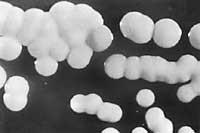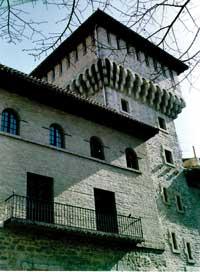Anbar alavés: the scientific gem of the media
1995/08/01 Apellaniz Ingunza, Estibaliz | Nuñez-Betelu, Koldo Iturria: Elhuyar aldizkaria
A few weeks ago we have known the amber deposit of high paleoentomological content of the lower Cretaceous of Alava. The media, as often happens when dealing with scientific issues, have again explained the discovery as something full of imprecision and error. Although the sad way of reporting and the traditional journalistic sensationalism could ruin the discovery a little, paleontologists mean that Alava amber has a scientific importance.
Amber, a fossil resin of conifers that appears in continental sedimentary rocks, has long been known to humans and has been frequently used in jewelry and ornaments, both in magic and medicine. On the other hand, if it retains inside remains of beings, it has a great scientific value. For example, in 1939, 2,000 species of insects were already known in the Baltic area in the Oligocene amber, exploited many years ago. But although this was the most famous, amber is also known in Alaska, Canada, Costa Rica, Lebanon and Siberia, the oldest being Charcoal.
On the other hand, the development of insects is closely linked to the evolution of plants, and the Lower Cretaceous is the main starting point of the evolution of plants, since at that time angiosperms emerged. Since then many plants, including many angiosperms, pollinate each other through insect activities. In addition to their pollinating function, insects often occupy other activities, such as feeding, building shelters, etc. in plants, which has led gymnosperms to pour the resin that we find today as amber.
Amber, in addition to its paleoentomological content, is often rich in palinomorphs, pollen and spores, as well as paleobotanical elements, and this fossiliferous set can have great taxonomic and biostratigraphic values. Moreover, both the fossils inside the amber and the composition of the bubble gases inside the amber, the physical and chemical characteristics of the environment of the time can be fixed: the paleoecological. Recently, it has been achieved for the first time to resurrect some of the bacterial spores of the digestive tract of an amber bee, at least 25 million years old in the Dominican Republic, which has made it possible that paleomicrobiology has given one of the greatest advances in recent years.
Although Alava amber has been known since time immemorial in the “Utrillas Facies” area of the Lower Cretaceous, it has become important the fosiliférico content that has just been found in it. However, despite the abundance of fossil insects of Alava amber, palinomorphs will provide more information on paleoclimatology of both age and age. On the other hand, the fossil insects of sedimentary rocks are very scarce in general and most of them, and the best preserved are found in amber. Therefore, from the Cretaceous this paleoentomology has needed insects inside the amber.
However, although 750,000 of the 1.4 million species currently known on Earth are insects, due to fossilization difficulties outside amber, this proportion is not met among fossil groups. However, arthropods have long been abundant and new species have been identified in all amber deposits. Therefore, new species and palinomorphs, plant fragments (seeds, leaves...) and other fossils will probably appear in Alava amber. All the fossils will contribute to spreading our knowledge of the environment in the lower southern Cretaceous of Alava.

Gai honi buruzko eduki gehiago
Elhuyarrek garatutako teknologia





